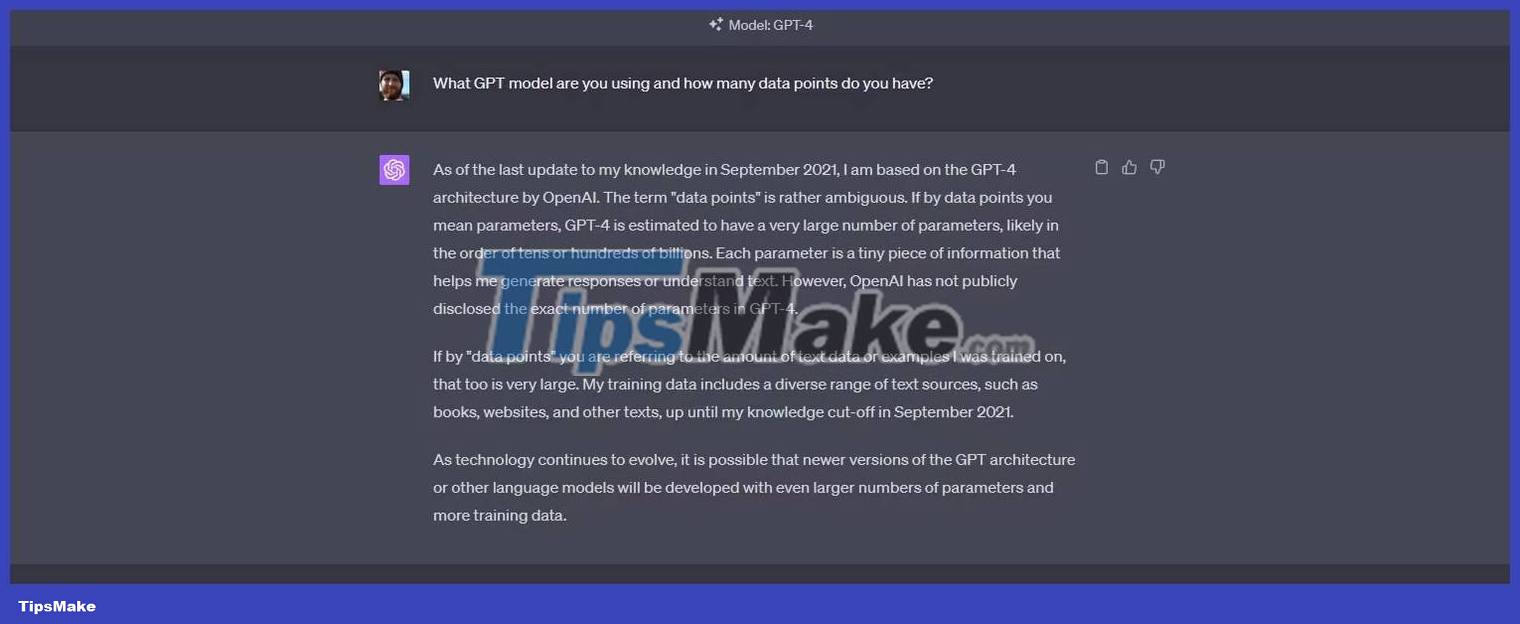What is Generative AI?
ChatGPT, Bing AI, and Google Bard are some of the most recognizable names in the world of consumer artificial intelligence. All 3 products have one thing in common - they are all Generative AI products.
But what exactly is Generative AI and what has sparked a recent fascination with the field?
What is Generative AI?
Generative AI, which stands for "Generative Artificial Intelligence", is a type of AI system that can generate unique or original content such as text, audio, video or images on demand. Unlike some traditional AI systems designed for tasks like data classification or analysis, Generative AI models are more concerned with generating new or innovative outputs based on the instructions they are given.
While Generative AI may seem like a new technology, it's actually been around for decades. Several versions and forms have emerged since at least the early 1960s. Artificial intelligence is a vast field and Generative AI is just a subsection.
One of the most compelling aspects of using a Generative AI tool like ChatGPT or Google's Bard AI is the ability of these tools to create content tailored to your requirements. You ask ChatGPT to write a poem in the style of William Shakespeare, and you will get something very similar to Shakespeare's work. You ask it to create a speech in the style of Donald Trump, and you will get something that emulates the tone of the former US president in an impressive way. So how can artificial intelligence create such a fascinating feat?
How Generative AI works
The working mechanism of a Generative AI model involves a complex interaction of many different Deep Learning techniques and algorithms. The exact details of how a Generative AI model works depends on its goals and the underlying architecture. For example, a Generative AI model for generating audio clips will have a different operating mechanism than that used to generate video or text.
At their core, however, most, if not all, of Generative AI models work similarly at a fundamental level. They learn from large amounts of data, capture patterns and data types, and then use these captured patterns to reproduce patterns that resemble what they learned in their training data.
You can think of Generative AI tools like a composer. Imagine this composer who has listened to countless songs and studied the harmony, melody, rhythm, and structure of several musical genres. In other words, this composer has extensive knowledge of many musical genres. With this knowledge, the composer can create original or original music inspired by what has been learned.
So if they've learned a lot about pop music, you can ask them to compose a pop song and they'll have no problem doing so. The music that is composed will then demonstrate the composer's understanding of pop music based on what they have learned. Similarly, the Generative AI product demonstrates the AI model's understanding of the underlying concepts learned from its training data.
So, if you want to create a Generative AI model that generates car images, you have to feed the model a huge data set of car images. To create an impressive model, you need to give it images of as many brands and models of cars as you can think of. With adequate training, the algorithm learns what each car brand or model looks like and can create an image of almost any car you can think of on demand.
Popular Generative AI models
There are hundreds of Generative AI models currently being developed or deployed in the consumer AI market. Some popular models you should know about include:
1. Generative Pre-Trained Transformer (GPT)

GPT, developed by OpenAI, is one of the most recognizable names in the Generative AI space. Popularity depends on its effectiveness as a conversational AI model and the viral success of the ChatGPT chatbot, which uses GPT as the underlying technology. It is a large language model designed to produce human-like text when prompted. Typical of any Generative AI model, all instances of the GPT model were trained on large amounts of rich textual data.
2. Pathways Language Model (PaLM)
PaLM is a powerful Generative AI model capable of performing many tasks such as creative writing, code generation, language translation, and several other text-based natural language tasks. Like GPT, PaLM is trained on a large corpus of textual data sourced from various sources on the web. This is the AI model that powers Google's Bard AI.
3. Music Language Model (MusicLM)
MusicLM is another Generative AI model from Google. It is designed to create "high-fidelity" music from simple text prompts. Trained on thousands of tracks of various genres, the new generation model can create unique music using simple descriptions of the music you need as input.
4. DALL-E
DALL-E is OpenAI's AI image generation model designed to generate a variety of unique visual styles from text prompts. This is a multimodal implementation of the GPT model, trained on many text-image pairs from various sources on the Internet.
In addition to Generative AI models, you'll also find Generative AI products like Midjourney, DALL-E image generator, Stable Diffusion image generator, Hugging Chat, and some other impressive AI products powered by Generative AI models.
Why is Generative AI exploding in popularity?
On November 30, 2022, OpenAI CEO Sam Altman announced the launch of ChatGPT in a tweet.
5 days later, ChatGPT has attracted its first million users; unprecedented speed for any app, making ChatGPT the fastest growing app of all time. While ChatGPT is not the first Generative AI product, its emergence into the AI product scene has brought Generative AI into the public consciousness more than any other technology product before it.
While ChatGPT is spearheading the hype around Generative AI, it doesn't do it alone. 2022 will be remembered as the year when Generative AI tools went mainstream. From conversational AI chatbots to art and code generators, the second half of 2022 will be the first time many AI tools with both mass appeal and real-world use are hit the market. With these tools, its underlying technology has become ubiquitous (Generative AI).
Generative AI tools like Bing AI, Google Bard, DALL-E, ChatGPT, and Midjourney have seamlessly interwoven into the fabric of our daily lives, continually presenting us with their remarkable creations. Whether it's the engaging articles created by ChatGPT or the amazingly lifelike images drawn by Midjourney, Generative AI has become a companion that is with us day in and day out. This is the source for the recent popularity of Generative AI.
You should read it
- How to use Photoshop's Generative Fill to change clothes for people in photos
- How to use Nightshade to protect your artwork from Generative AI
- 10 ways to use Generative Fill to improve photos in Photoshop
- Photoshop beta 25.0 supports creating AI images in Vietnamese
- Microsoft embraces a host of notable AI features for Windows 11: Generative AI for Paint, OCR and more
- Google AI can create 3D images from 'flat' 2D images.
- OpenAI Dall-E 3 launched: A leapfrogging generative AI platform
- Photoshop's new AI engine allows images to be enlarged with new landscapes
May be interested
- Why is Generative AI not good for gaming?
 artificial intelligence (ai) has had a major impact on most creative fields in recent years. while the possibilities are great, we should be careful to ensure all of these rapid changes are beneficial.
artificial intelligence (ai) has had a major impact on most creative fields in recent years. while the possibilities are great, we should be careful to ensure all of these rapid changes are beneficial. - Microsoft Paint gets Generative AI tools
 the latest updates to this photo and graphics editor introduce generative ai features, showing that the app can still be relevant today.
the latest updates to this photo and graphics editor introduce generative ai features, showing that the app can still be relevant today. - This feature makes Adobe's new AI app a must-try tool.
 mobile photo editing has always been a compromise—you either settle for basic tools or struggle with apps that are too bloated for your phone. adobe's new firefly app turns that on its head.
mobile photo editing has always been a compromise—you either settle for basic tools or struggle with apps that are too bloated for your phone. adobe's new firefly app turns that on its head. - Rushing to invest in generative AI because of FOMO?
 fear of missing out (fomo) may be the reason why many technology giants today pour huge sums of money into generative ai startups.
fear of missing out (fomo) may be the reason why many technology giants today pour huge sums of money into generative ai startups. - How to enable/disable application access to Generative AI in Windows 11
 this guide will show you how to allow or deny apps access to generative ai for your account or all users in windows 11.
this guide will show you how to allow or deny apps access to generative ai for your account or all users in windows 11. - Photoshop beta 25.0 supports creating AI images in Vietnamese
 recently, adobe released update 25.0 for photoshop beta with a number of small improvements, especially features such as generative fill or generative expand that allow users to enter commands in vietnamese. .
recently, adobe released update 25.0 for photoshop beta with a number of small improvements, especially features such as generative fill or generative expand that allow users to enter commands in vietnamese. . - Microsoft embraces a host of notable AI features for Windows 11: Generative AI for Paint, OCR and more
 the us software giant is weighing the idea of adding a bunch of ai-based features to the windows 11 ecosystem.
the us software giant is weighing the idea of adding a bunch of ai-based features to the windows 11 ecosystem. - Why Generative AI Shouldn't Be in Smart Home Devices?
 when it comes to smart home technology, the promise of generative ai sounds like something out of a science fiction novel.
when it comes to smart home technology, the promise of generative ai sounds like something out of a science fiction novel. - Learn about the Generative Erase feature of the Windows Photos application
 generative erase is a tool built into the windows photos application that allows selecting and removing objects from images.
generative erase is a tool built into the windows photos application that allows selecting and removing objects from images. - First impressions of Bard: Google's generative AI
 bard is a generative ai designed to generate text from naturally written queries. bard uses google's own language model, lamda (language model for dialogue applications).
bard is a generative ai designed to generate text from naturally written queries. bard uses google's own language model, lamda (language model for dialogue applications).










 9 ways ChatGPT helps content creators
9 ways ChatGPT helps content creators Why are hackers targeting ChatGPT accounts?
Why are hackers targeting ChatGPT accounts? 5 reasons why companies ban ChatGPT
5 reasons why companies ban ChatGPT 5 things not to be shared with AI chatbots
5 things not to be shared with AI chatbots Android or iOS better? Bard answers a question that causes fever for Google engineers
Android or iOS better? Bard answers a question that causes fever for Google engineers 5 potential negative health effects of Generative AI technology
5 potential negative health effects of Generative AI technology